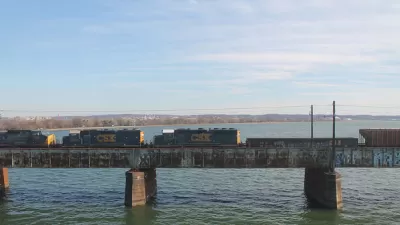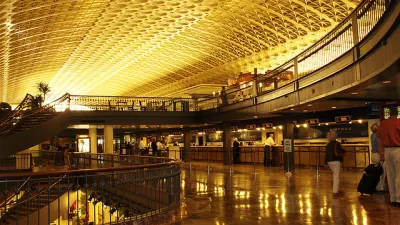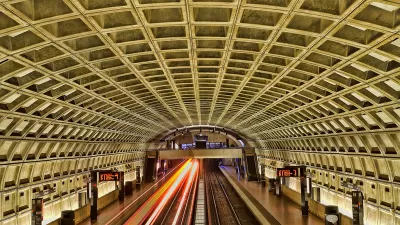D.C.'s ridership is down even as density around stations is up. More residents are choosing to drive or bike.

D.C. Metro ridership is falling at a concerning rate, even as more people move to the areas with good transit access. "According to census data provided to Express by the city’s planning office, about 200,000 households were living within a half-mile of a Metro station in the period between 2012 and 2016, about 15,000 more than in the previous five-year period," Kery Murakami writes for the Washington Post. Density is a key factor in how well transit can work. But in D.C. many riders are switching to driving.
At the same time active modes have been growing as well. "The number of those walking or commuting by another means — like biking, scootering or taking a ride-share service — grew by a third," Murakami reports. There have been a few bright spots, "Ridership did grow at seven of D.C.’s 40 Metro stations, as the neighborhoods around them grew," Murakami writes. But on balance the system has had trouble keeping up with the competition.
FULL STORY: More people are living near Metro stations. But fewer are actually riding the trains

Study: Maui’s Plan to Convert Vacation Rentals to Long-Term Housing Could Cause Nearly $1 Billion Economic Loss
The plan would reduce visitor accommodation by 25,% resulting in 1,900 jobs lost.

North Texas Transit Leaders Tout Benefits of TOD for Growing Region
At a summit focused on transit-oriented development, policymakers discussed how North Texas’ expanded light rail system can serve as a tool for economic growth.

Why Should We Subsidize Public Transportation?
Many public transit agencies face financial stress due to rising costs, declining fare revenue, and declining subsidies. Transit advocates must provide a strong business case for increasing public transit funding.

How to Make US Trains Faster
Changes to boarding platforms and a switch to electric trains could improve U.S. passenger rail service without the added cost of high-speed rail.

Columbia’s Revitalized ‘Loop’ Is a Hub for Local Entrepreneurs
A focus on small businesses is helping a commercial corridor in Columbia, Missouri thrive.

Invasive Insect Threatens Minnesota’s Ash Forests
The Emerald Ash Borer is a rapidly spreading invasive pest threatening Minnesota’s ash trees, and homeowners are encouraged to plant diverse replacement species, avoid moving ash firewood, and monitor for signs of infestation.
Urban Design for Planners 1: Software Tools
This six-course series explores essential urban design concepts using open source software and equips planners with the tools they need to participate fully in the urban design process.
Planning for Universal Design
Learn the tools for implementing Universal Design in planning regulations.
City of Santa Clarita
Ascent Environmental
Institute for Housing and Urban Development Studies (IHS)
City of Grandview
Harvard GSD Executive Education
Toledo-Lucas County Plan Commissions
Salt Lake City
NYU Wagner Graduate School of Public Service





























